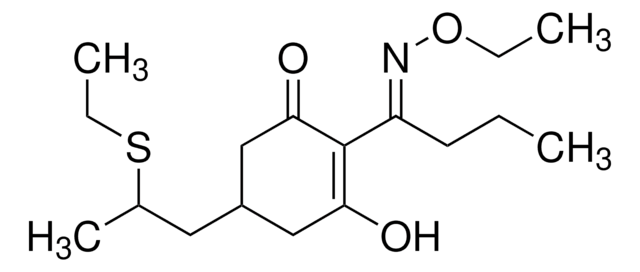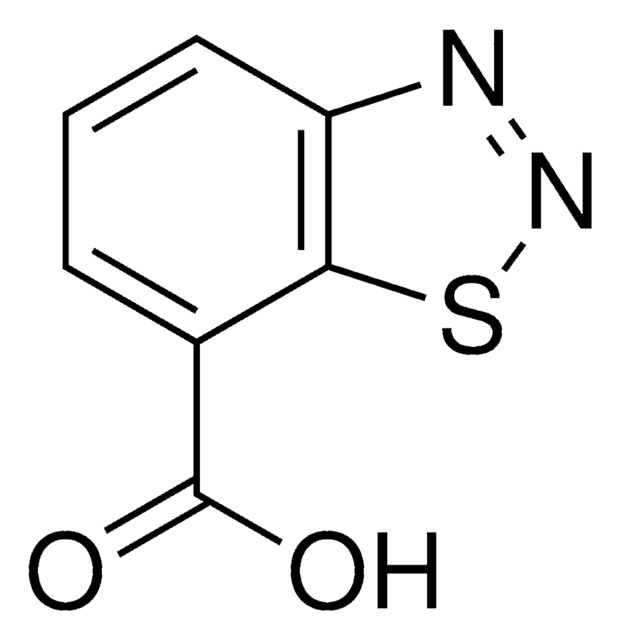36795
Sethoxydim
PESTANAL®, analytical standard
About This Item
Productos recomendados
grade
analytical standard
Quality Level
product line
PESTANAL®
shelf life
limited shelf life, expiry date on the label
technique(s)
HPLC: suitable
gas chromatography (GC): suitable
application(s)
agriculture
environmental
format
neat
storage temp.
−20°C
SMILES string
CCC\C(=N/OCC)C1=C(O)CC(CC(C)SCC)CC1=O
InChI
1S/C17H29NO3S/c1-5-8-14(18-21-6-2)17-15(19)10-13(11-16(17)20)9-12(4)22-7-3/h12-13,19H,5-11H2,1-4H3/b18-14+
InChI key
CSPPKDPQLUUTND-NBVRZTHBSA-N
¿Está buscando productos similares? Visita Guía de comparación de productos
General description
Sethoxydim is not approved for its use in the European Union. Maximum residue levels (MRLs) have been set according to Reg (EC) No 839/2008 for sethoxydim (to be calculated as the sum of sethoxydim and clethodim including degradation products) for various products of plant and animal origin from 0.05 to 1 mg/kg.
Application
The analytical standard can be used to:
- Study the inhibition effect of acetyl-CoA carboxylase in barley chloroplasts using cycloxydim, sethoxydim, and clethodim herbicides
- Study the photochemical changes and oxidative damage in four foxtail millet varieties after exposure to sethoxydim
- Study the resistance mechanism of chloroplastic acetyl-CoA carboxylase from green foxtail (Setaria viridis L. Beauv.) towards cyclohexanedione herbicide sethoxydim
- Study the inhibition mechanism of acetyl-CoA carboxylase by sethoxydim and haloxyfop using a semipurified enzyme preparation extracted from black Mexican sweet maize
- Evaluate the tolerance of 11 grass species used in minimal-to-no-mow turf areas to three postemergence herbicides applied at one- and twofold recommended label rates
- Generate sethoxydim-resistant mutants of Micractinium sp. by UV-C mutagenesis for increased cellular triacylglycerol (TAG) without compromising on growth rate
Legal Information
hcodes
pcodes
Hazard Classifications
Aquatic Chronic 2
Storage Class
10 - Combustible liquids
wgk_germany
WGK 2
flash_point_f
Not applicable
flash_point_c
Not applicable
ppe
Eyeshields, Gloves, type N95 (US)
Elija entre una de las versiones más recientes:
Certificados de análisis (COA)
¿No ve la versión correcta?
Si necesita una versión concreta, puede buscar un certificado específico por el número de lote.
¿Ya tiene este producto?
Encuentre la documentación para los productos que ha comprado recientemente en la Biblioteca de documentos.
Nuestro equipo de científicos tiene experiencia en todas las áreas de investigación: Ciencias de la vida, Ciencia de los materiales, Síntesis química, Cromatografía, Analítica y muchas otras.
Póngase en contacto con el Servicio técnico









